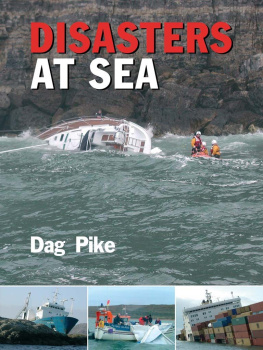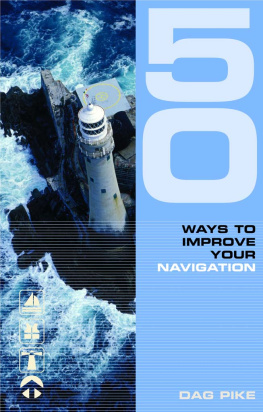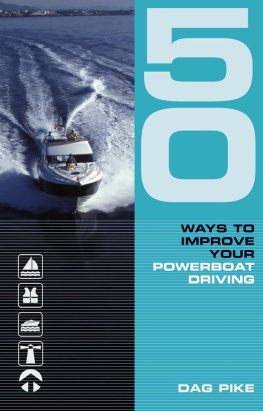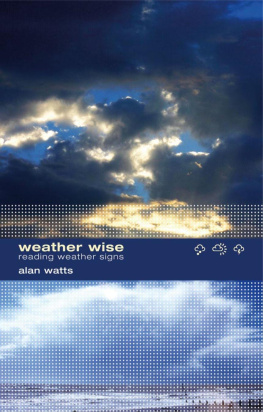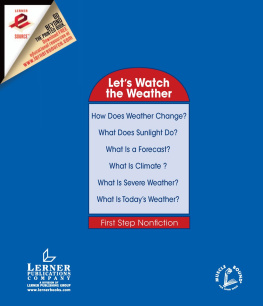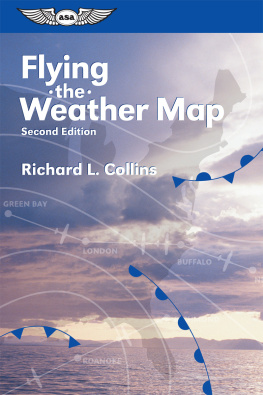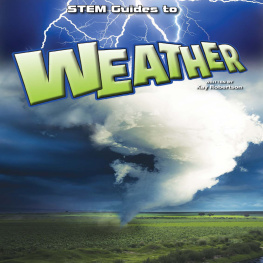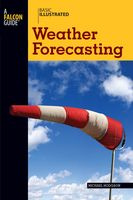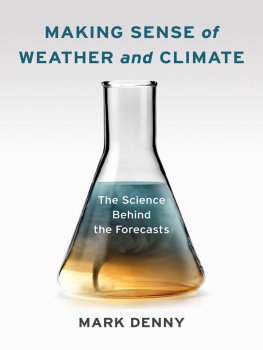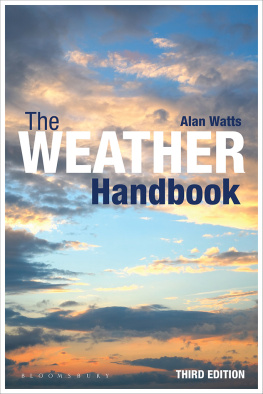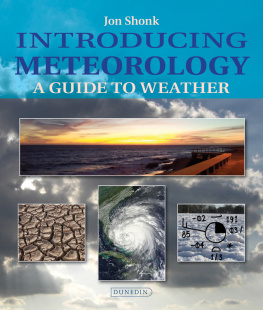
GET THE BEST POSSIBLE WEATHER INFORMATION BEFORE YOU LEAVE HARBOUR.
The weather dictates much of what can be done at sea, so you need the best information about the weather that is available if you want to go to sea without nasty surprises. While forecasts can tell a major part of the weather story, they need your input if they are going to be used successfully. The weather forecast will be your basic guide, but making the decision about when to go to sea and what tactics to employ is something that you, not the weather forecaster, must do. Many people blame the forecaster when things dont turn out as planned, but in the majority of cases it is the yachtsman or motorboater involved who should take responsibility.
To start with, the forecast will give a general picture of what weather conditions you can expect, but it doesnt usually indicate what the sea conditions will be like. It is the sea conditions rather than the wind that can have an important bearing on both comfort and safety at sea, and these conditions will really be your main concern when you are leaving port. Most sailors will have a general idea of the sea conditions that can be expected in various wind conditions but sea conditions can also be greatly affected by local topography, shallow water and tides you need to interpret the forecast bearing these factors in mind.
Even the wind strengths given in forecasts can often span a considerable range of conditions. The forecaster may predict wind strengths of between, say, force 5 and force 7; here, you are presented with conditions that at the top end of the forecast range may be too strong for you yet at the bottom end could be just right for a fine days sailing.
So when you get the forecast before going to sea, stop and think about it quite carefully. Study it in relation to the sea areas you will be sailing in and make your own assessment of what conditions will be like, both at the time of sailing and during the course of your passage. If you are in any doubt about whether conditions will be suitable, go out and have a look to see what it is really like out there. Do this knowing that you have the option of turning round and coming back if you dont like what you see. Also look for stopping places along the route where the days sailing could be abandoned if the conditions turn out to be worse than expected. Keep your options open as much as you can but remember it is you, not the forecaster, who has to make the final decision about whether conditions are suitable for you, your crew and your boat.

MAKING THE DECISION ABOUT WHEN TO GO TO SEA IS SOMETHING THAT YOU, NOT THE WEATHER FORECASTER, MUST DO.
We tend to think of the weather as something absolute, something that is cast in stone and cant be changed. Well, yes, you cannot actually change the weather, but remember that it is constantly changing and will also change considerably with time. The forecast can reveal a good part of what is happening and what is going to happen, but the factors you can determine will allow you to have a degree of control and let you negotiate with the weather.
Although you cant change the weather, your power of negotiation lies in your ability to decide where you are and where you are going to be in relation to the changing weather patterns. By using the factor of time, you can exercise considerable control over the weather you experience, because the weather will be changing as time progresses. By using the element of time in this way, you may decide to delay your departure for a day or so; but even delaying departure by an hour or two can allow a front to pass through your position. The passage of a front in this way can produce a significant change in the weather you experience when you set off.

In order to negotiate with the weather, you will need the best possible weather information you can obtain, and this should relate to your individual location as far as possible. Of particular importance is the timing of any weather changes that are forecast to occur. You will need to relate these to your current position, and local observations such as rain density and clouds can often provide you with an indication of impending change. The more information you have and the better the quality of that information, the stronger will be your negotiating position in regard to the weather. The difference in the quality of the information you obtain could mean a day spent at sea rather than holed up in harbour.

A TYPICAL NORTHERN HEMISPHERE DEPRESSION WITH THE SHADED SECTION SHOWING THE MAIN AREAS AND THE BROKEN ARROW SHOWING THE DIRECTION OF TRAVEL. THE STRONGER ARROWS DENOTE THE WARM AIR SECTION OF THE DEPRESSION.
We saw in , how time can be important in weather forecasting. We are used to weather being presented to us in two dimensions, as is the case with the weather patterns shown on a weather map. For marine use, this two-dimensional weather is adequate for a snapshot of likely conditions, but there is also a vertical component to the weather. This will be of more interest to fliers than boaters, but we can see the evidence of this in the way the weather behaves in a front or in a squall or a thunderstorm. For the sailor, it is the fourth dimension of the weather the factor of time that can be vitally important when working out whats to come and when.
Weather forecasts tend to cover fixed periods of time, usually 12 or 24 hour periods, and each forecast can cover a considerable area. While you will obviously be interested in the general weather patterns, what you really need to know is what the weather conditions will be like along the route you are planning to take and in the locations you will reach at a particular time. Unless you get a personalised forecast, it is up to you to interpret the general forecast and tailor it to your specific requirements - which involves considering the factor of time.
The best basic tool for this is to obtain two or more consecutive weather charts. By comparing these, you can get a good idea of how the weather patterns are changing over time. These consecutive weather charts will show the movement of the weather fronts and the wind changes associated with them, so that you can estimate much more accurately when changes will occur in your particular locality.
You can do this with traditional paper forecast charts, but a better solution, using modern technology, is to study computer programs that show moving weather patterns. Computer-generated weather charts are still based mainly on weather information that is processed every 12 hours, but with computer technology all the weather patterns during these 12 hour periods can be shown with the changes every hour or so. By using these sequential weather charts, you can obtain a much better picture of the changing weather patterns and get a real handle on the fourth dimension of the weather. These moving charts allow you to see how the changes relate to your current and proposed positions.


